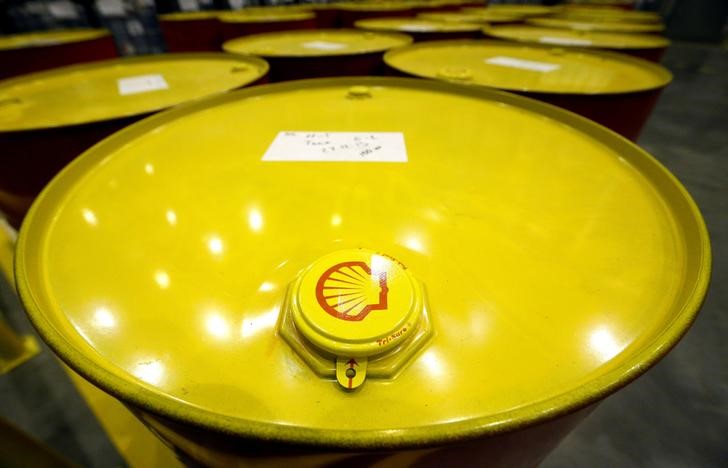By Ron Bousso
LONDON (Reuters) - Oil majors have long been passive watchers of the pump war between OPEC and U.S. shale producers, but not any more.
Majors were unable to grow output for the past decade even as oil prices soared above $100 per barrel due bad capital discipline and huge project delays.
The oil price slump since 2014 has prompted the world's biggest oil firms to drastically cut costs but also to force contractors to make projects more efficient and extract the same amount of barrels for fewer dollars.
As a result, most majors are now planning exceptionally strong production growth until at least 2021, a Reuters analysis of the latest investor presentation and corporate plans showed.
Even as prices hold near $50 per barrel, the firms - Royal Dutch/Shell (L:RDSa), ExxonMobil (N:XOM), Chevron (N:CVX), BP (L:BP), Total (PA:TOTF), Statoil (OL:STL) and Eni (MI:ENI) - plan to grow output by a combined 15 percent in the next five years.
"This environment requires discipline on costs and strongoperating performance. It will reward businesses that can remain highly competitive at these prices," BP's chief Bob Dudley said at the London-based company's strategy day last week.
The seven companies will add almost 3 million barrels per day to their combined output in the next 5 years effectively generating production the size of another major like Chevron.
For a graphic on production: http://tmsnrt.rs/2m3xeiD
A lot of new barrels will not be necessarily oil as firms like Shell and Eni are pressing ahead with giant gas projects.
But the development still challenges the predominant narrative in the notoriously cyclical oil sector - that the reduction of investment during more than two years of low prices would lead to a supply crunch by the end of this decade.
Many executives including the head of Total Patrick Pouyanne and Eni's Claudio Descalzi as well as the International Energy Agency have predicted a crunch by 2020, based on low levels of investments in new projects.
"The investor mindset is switching to growth again," said Anish Kapadia, analyst at investment bank Tudor, Pickering, Holt& Co. "Oil prices are above $50 a barrel, companies are generating cash and are starting to talk about growth again, we are at that point of the cycle."
THE EXXON-VS-SHELL RACE
The change in mood is expected to be reflected at this week's CERAWeek industry conference in Houston, Texas, as activity in the U.S. shale picks up rapidly and global merger and acquisition activity returns.
Unlike in the previous decade, when U.S. oil output growth was driven by independent firms, majors such as Exxon plan to be the driving force behind the new cycle.
Exxon and Chevron are both betting much of their money on shale production which benefits from relatively low investment and rapid production.
Europe's oil majors on the other hand are focusing more on the traditional large, often offshore projects such in the Gulf of Mexico and Brazil that require big investment and years to develop but also produce larger volumes of oil and gas.
As things stand, Shell could dethrone Exxon as the biggest publicly-traded oil producer by the end of the decade with projected output of 4.23 million boe in 2021.
That figure could be revised down because Shell plans to dispose of more than $20 billion of assets in the next two years to pay for its $54 billion acquisition of BG Group.
The Anglo-Dutch group has already outstripped Exxon on profits in the past two quarters.
Jason Kenney, analyst at Santander (MC:SAN), sees France's Total (PA:TOTF) as particularly well positioned to benefit from the recovery in oil prices as it is now set to reap the fruit of investments already made.
"The company (Total) is benefiting from a period of'already invested-in' growth delivery when others are debating about reinvestment for long term growth," he said.

Total leads the group of oil majors with a return on average capital employed, a ratio of profitability versus investments,of 10.2, with Exxon second at 7.3, according to Kenney.